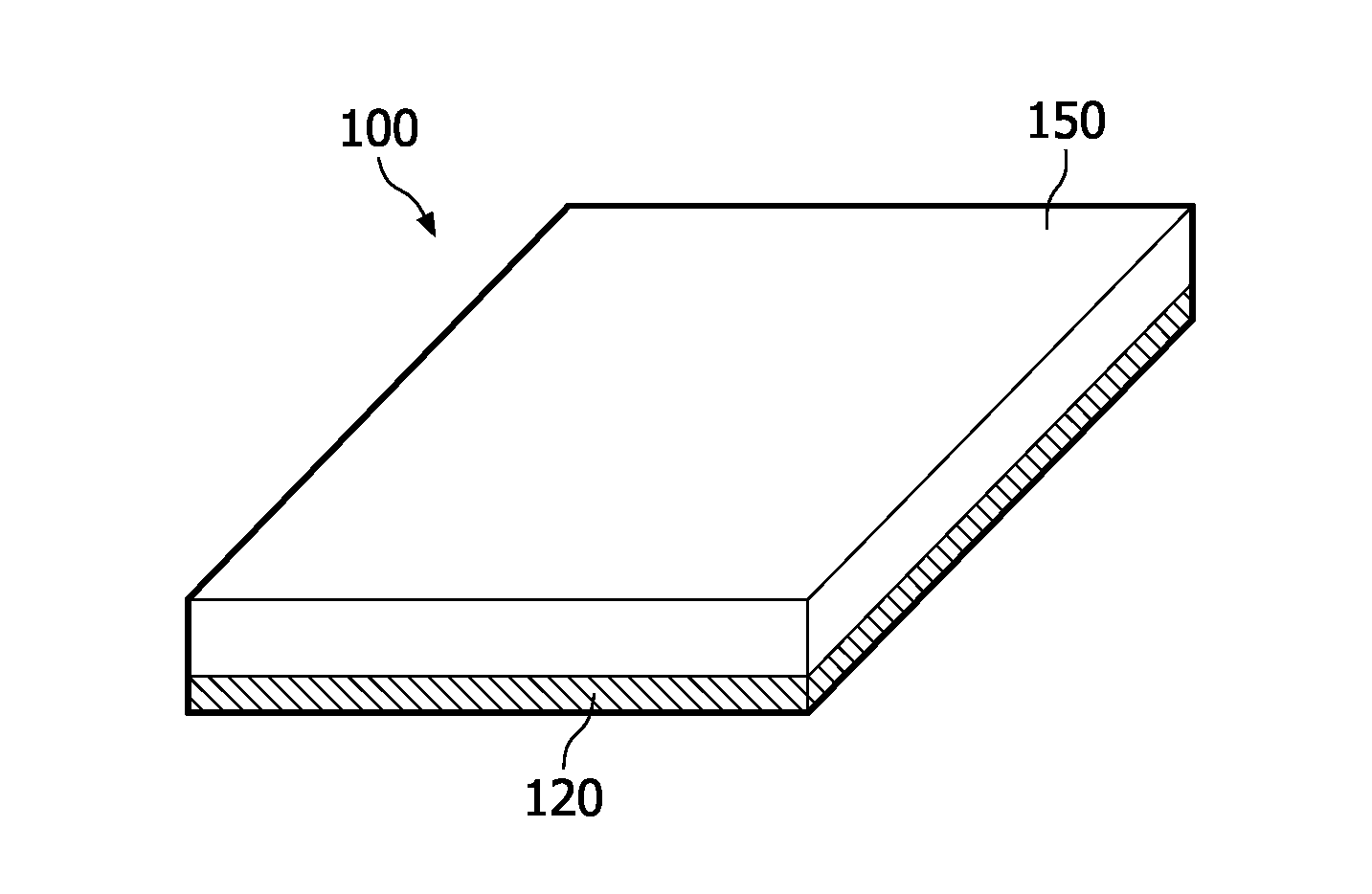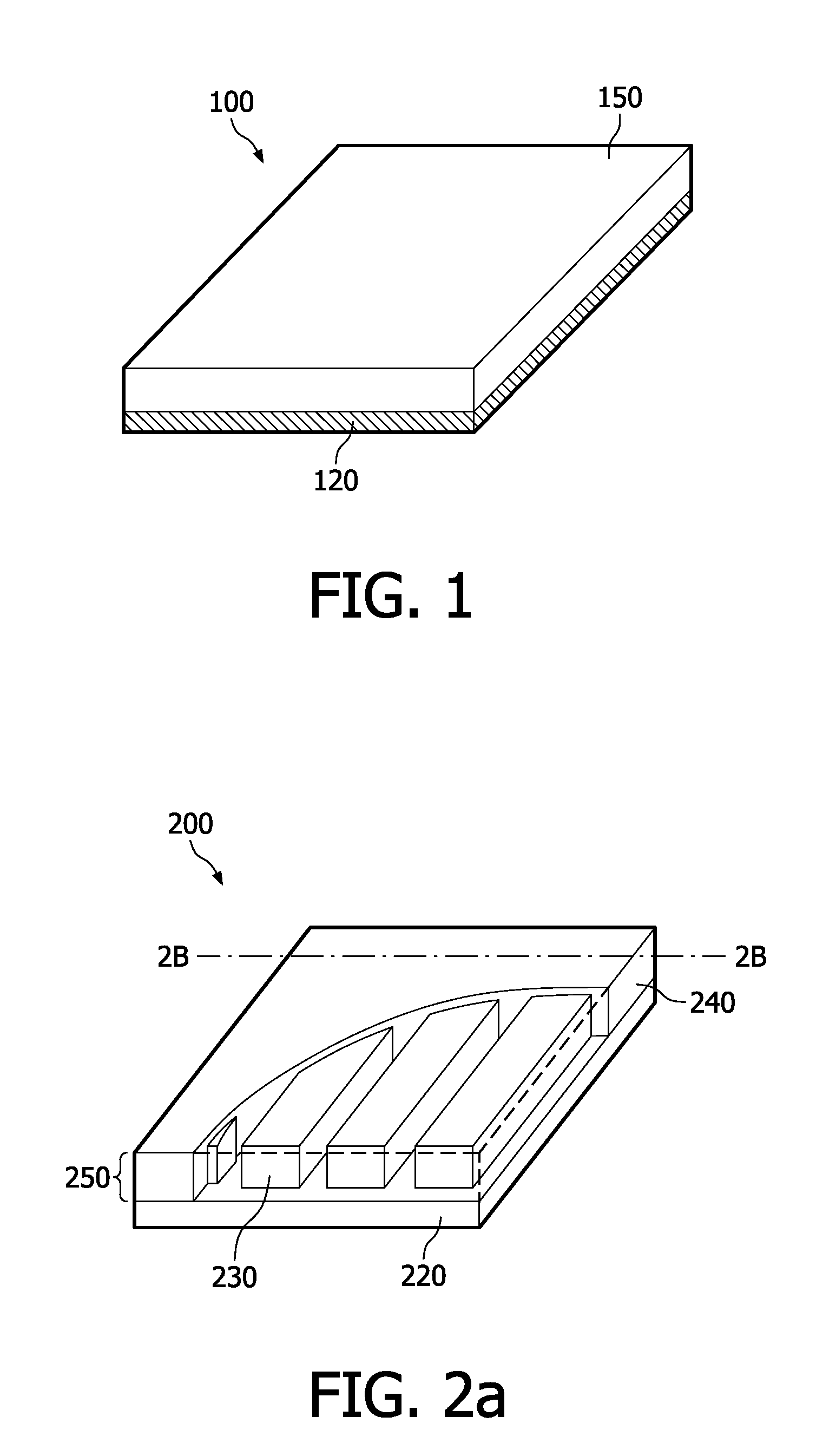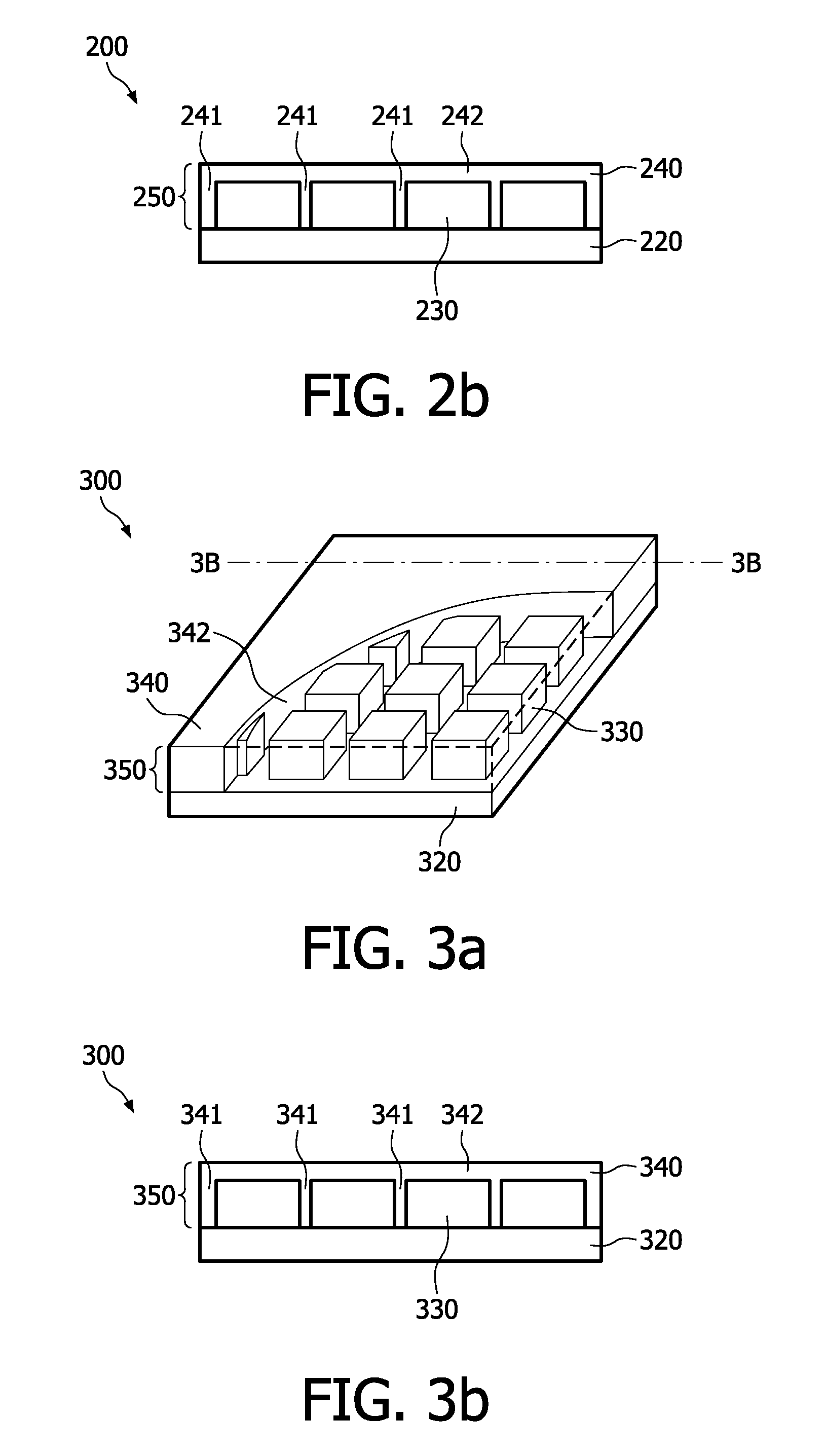Radiation detector comprising a light reflective material
a light-reflective material and detector technology, applied in the field of radiation detectors, can solve the problems of white separators or spacers made by means of this known technology, the thickness of white coatings at the outside edge of arrays, and the limited space for coatings, so as to increase the scattering coefficient of resultant materials, reduce stress, and reduce the effect of scattering
- Summary
- Abstract
- Description
- Claims
- Application Information
AI Technical Summary
Benefits of technology
Problems solved by technology
Method used
Image
Examples
Embodiment Construction
[0045]FIG. 1 is a perspective view of a radiation detector 100. The radiation detector 100 is an X-ray detector. The X-ray detector 100 comprises a photo-detecting element array 120 having one or more photo-detecting elements. The photo-detecting elements may be photodiodes or any other material converting light to electricity. The detector 100 also comprises imaging elements in the form of a scintillation layer 150 comprising one or more scintillator elements. The scintillator elements of the scintillation layer 150 are covered by a light-reflecting material. FIG. 1 shows that the scintillation layer 150 is arranged above and fixed to the photo-detecting element array 120. The scintillation layer may be optically coupled to the front or top surface of the photo detector array using an optical adhesive. In FIG. 1, the components of the scintillation layer, viz. the scintillator elements, are covered and concealed by the light-reflecting material.
[0046]FIG. 2a is a perspective view o...
PUM
 Login to View More
Login to View More Abstract
Description
Claims
Application Information
 Login to View More
Login to View More - R&D
- Intellectual Property
- Life Sciences
- Materials
- Tech Scout
- Unparalleled Data Quality
- Higher Quality Content
- 60% Fewer Hallucinations
Browse by: Latest US Patents, China's latest patents, Technical Efficacy Thesaurus, Application Domain, Technology Topic, Popular Technical Reports.
© 2025 PatSnap. All rights reserved.Legal|Privacy policy|Modern Slavery Act Transparency Statement|Sitemap|About US| Contact US: help@patsnap.com



